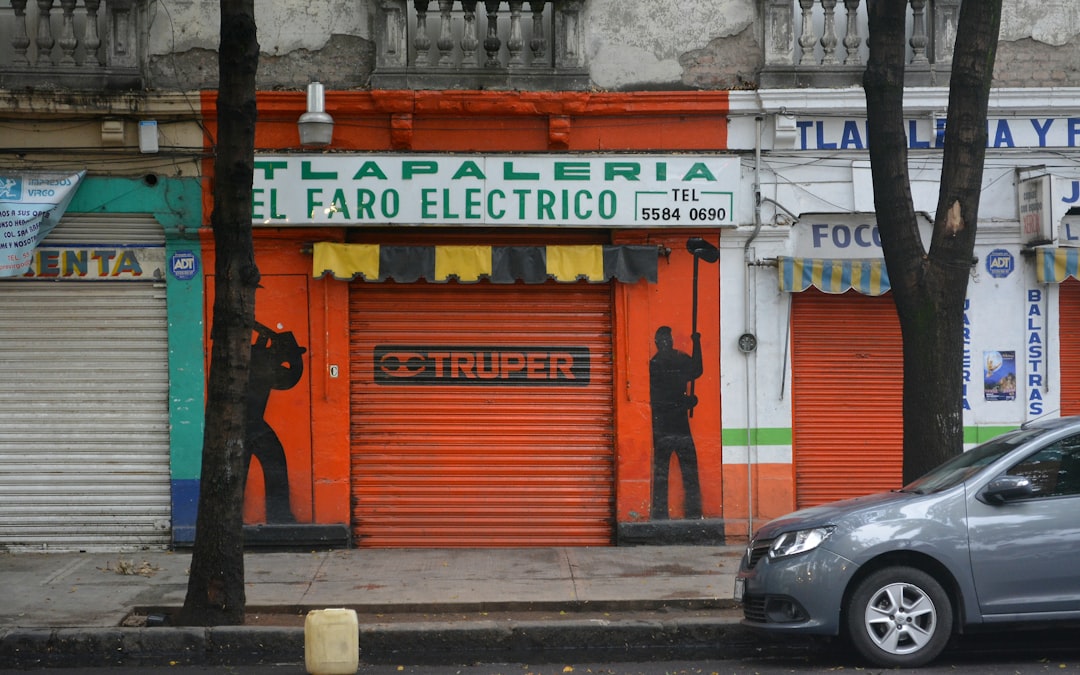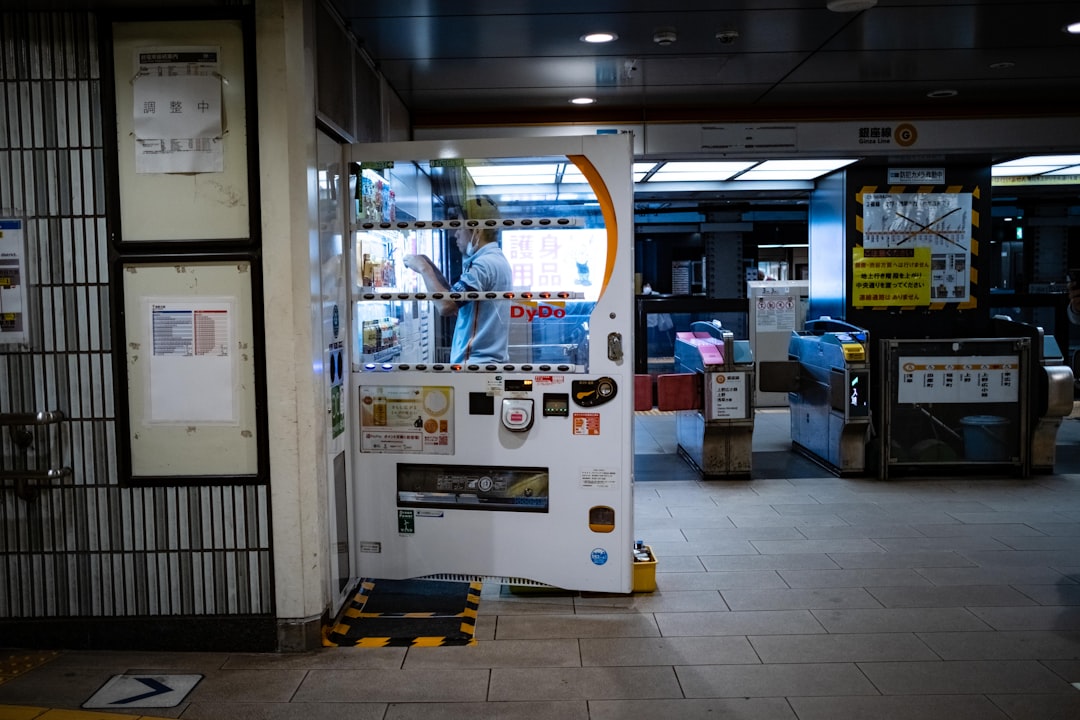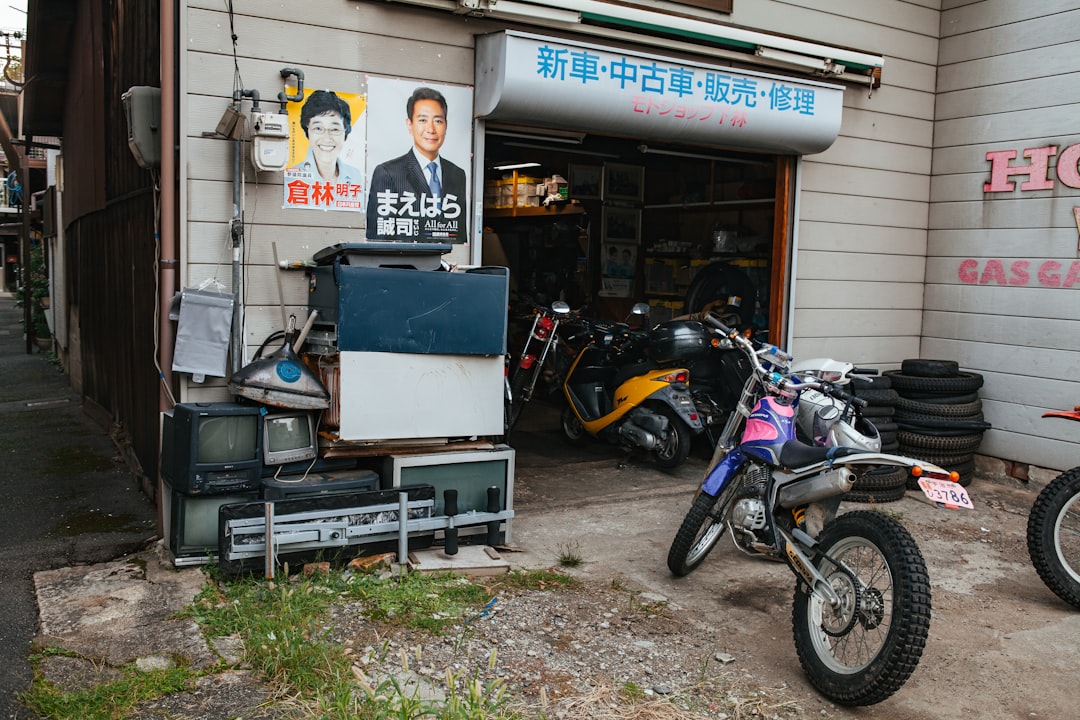

Engage prospects with a scan and streamline customer engagement with FREE QR code marketing tools by Sona – no strings attached!
Create a Free QR CodeFree consultation

No commitment

Engage prospects with a scan and streamline customer engagement with FREE QR code marketing tools by Sona – no strings attached!
Create a Free QR CodeFree consultation

No commitment
In today’s digitally driven business landscape, electric motor repair shops struggle to bridge the gap between hands-on services and evolving customer expectations. A major challenge is missing high-value prospects: many customers interact with shop materials or staff without ever filling out a form or booking online, leaving valuable opportunities untracked and unpursued.
QR codes in marketing have emerged as a practical strategy for connecting offline touchpoints such as service tags, diagnostic reports, or equipment labels to actionable digital experiences like booking forms or online maintenance records. By embedding QR codes into the workflow, shops can transform passive encounters into measurable engagement and prevent lost leads.
This guide will help electric motor repair professionals leverage QR codes not simply as a convenience, but as a foundation for smarter lead generation, improved customer service, and actionable analytics. Discover how small shifts in touchpoint design can support growth, prevent wasted spend, and build a more customer-centric repair operation.

Many electric motor repair shops rely on outdated workflows like handwritten intake sheets, paper checklists, or static business cards. These processes slow data capture, introduce errors, and make follow-up inconsistent, especially when a prospect does not formally submit a request. The result is a fractured view of customer intent and a pipeline that is less predictable than it should be.
Embedding QR codes into everyday touchpoints closes the gap. A QR on a diagnostic report can route a customer to a personalized repair summary and approval form. A QR on a counter sign can open a prefilled booking page. A QR on a service tag can send owners to maintenance histories and warranty registration. Every scan feeds attribution, grows a qualified contact list, and reduces manual data entry, making customer engagement faster and more reliable.
To do this effectively, define success metrics up front. Target outcomes such as a reduction in no-shows, an increase in online bookings, higher feedback response rates, and shorter approval cycles. Then unify campaign creation and tracking in a centralized solution like Sona QR. Instead of guessing which counter sign or direct mailer works, you will know which physical asset generated scans, which scans resulted in bookings, and where to optimize next.

Electric motor repair environments handle complex assets, technical documentation, and time-sensitive decisions. Paper packets, printed estimates, and ad hoc emails create silos that hide buyer intent and slow approvals. Customers often leave with a motor or a quote but without an easy way to take action later, and busy teams lack the data to re-engage intelligently.
QR codes solve several of these pain points at once. They deliver speed and clarity for the customer and trackability and segmentation for the business. When placed on appointment cards, service tags, and warranty packets, QR codes convert physical interest into digital action. Dynamic QR codes allow destinations to be updated without reprinting materials, keeping content relevant for seasonal offers, compliance bulletins, or changing lead magnets.
Consider the most common materials in a shop and how QR codes elevate them:
Over time, your shop gains a precise picture of engagement. You will see which moments spark action, how long it takes customers to move from scan to approval, and which educational assets reduce friction in complex repair decisions.
QR codes are versatile. The right format depends on what you want the customer or technician to do next. For electric motor repair shops, several formats stand out because they align with field service realities, compliance needs, and fast-moving approvals.
Dynamic QR codes are particularly valuable in this vertical. A dynamic code on a service tag can point to a maintenance checklist during one season and a safety inspection checklist during another. With Sona QR, you can update the destination in seconds, turn on tracking, and build retargeting audiences without reprinting labels or cards.

Your highest-intent interactions are often hiding in plain sight. Customers are most receptive at pickup, during approvals, and immediately after a repair when they want to understand next steps. Strategic QR placements at these moments move people from interest to action while giving your team actionable data.
Place QR codes on service tags to direct customers to warranty registration or a maintenance plan enrollment page. This ensures high-fit buyers are not lost after they leave the shop. On the counter, feature a scan-to-schedule sign and a scan-to-feedback option so that hesitant prospects can take the next step privately and quickly. In the waiting area, use signage that links to safety videos, lubrication guides, and motor efficiency calculators to educate and qualify interest.
You can also extend engagement beyond your four walls. Add QR codes to direct mail for seasonal tune-ups, to invoices for enrolling in auto-pay, and to delivery paperwork for reordering consumables. By treating each touchpoint as an onramp to a digital experience, you will surface hidden needs, reduce churn, and identify upsell opportunities earlier.

QR codes shine when they reduce friction, capture data, and deliver context at the exact moment someone needs it. Here are common use cases that align with daily shop operations and customer behavior.
Each use case pairs a physical touchpoint with an action. The results are tangible: faster approvals, more bookings, fewer missed callbacks, and a pipeline fed by real engagement instead of guesswork.
Every scan is a signal. The page someone scanned from, the time of day, and the destination they chose all hint at where they are in the journey and what they need next. By placing different QR codes at awareness, consideration, and conversion touchpoints, you can automatically build segmented audiences that inform CRM workflows and paid media.
Start by differentiating scan points:
Then tailor audiences to common roles and contexts in electric motor repair:
With Sona QR, each scan can sync to HubSpot or Salesforce as a tagged event. You can trigger emails for abandoned approvals, create custom audiences for Meta and Google, and alert sales when a high-fit account scans a pricing sheet. For paid activation, see Sona’s retargeting playbook. For CRM setup, follow the HubSpot integration.
QR codes are connective tissue for campaigns that span print, in-person, and digital channels. They make traditionally opaque media measurable and help your team deliver a cohesive experience from the first scan to the final invoice.
Centralizing these codes in Sona QR lets you manage destinations, apply consistent branding, and integrate scan data with CRM and ad platforms. The result is a connected funnel where every channel supports bookings, retention, and cross-sell opportunities.
Clarify the business outcome you want, such as more same-week bookings, faster approvals, or higher maintenance plan enrollments. In electric motor repair shops, a high-impact starting point is scan-to-schedule on quotes and counter signage to reduce time from interest to appointment.
Evaluate where analog processes break down. If handwritten forms delay approvals or business cards go missing, map those pain points to QR-enabled actions. A focused use case with a clear metric, such as “increase quote approvals within 48 hours by 20 percent,” provides alignment across marketing, operations, and the front desk.
Select static or dynamic codes based on your need for flexibility and tracking. Static codes are fine for unchanging resources like a safety PDF. Dynamic codes support editable destinations, scan analytics, and audience tagging, which are essential when you want to update seasonal offers, rotate service specials, or A/B test destinations without reprinting.
Match the format to the action. For booking and approvals, use web links. For emergencies, use SMS or email with a prefilled message to reduce typing. For relationship building, use vCards on technician cards and follow with a welcome sequence that confirms the saved contact and offers a scheduling link. Sona QR can generate each type and keep them organized by campaign. Start creating QR codes for free.
Design for clarity and scannability. Use a strong contrast between the code and background, include a clear CTA such as “Scan to Approve” or “Scan for Service History,” and provide enough white space to avoid visual clutter. Place the CTA within a visual frame so people know what they get for scanning.
Test in real-world conditions. Verify scans from multiple phones, at different angles, and under the lighting you expect onsite. If codes will be placed on equipment, test scannability after exposure to dust and vibration. If codes will be on vehicles or outdoor signage, confirm visibility at expected distances. A few minutes of testing prevents avoidable failures later.
Prioritize the placements that align with your growth goals. For bookings and approvals, focus on quotes, counter signage, and follow-up emails with printable PDFs that include the same QR. For retention and upsell, use service tags, delivery paperwork, and waiting area posters that link to maintenance plans and warranty upgrades.
Roll out in phases to learn quickly. Start with two or three placements that see the most traffic, such as the counter, the quote template, and the technician’s card. Measure results for two to four weeks, then expand to direct mailers, outdoor signage, and vehicle decals. A phased approach reduces complexity and improves your ability to attribute performance.
Instrument your QR campaigns so that scans feed into analytics and CRM. Use UTM parameters to differentiate placements like counter, quote, or direct mail. In Sona QR, track scans by time, device, and location, and sync events to your CRM to trigger workflows such as “approval reminder after 24 hours.”
Optimize iteratively. If scan volume is high but conversions are low, adjust the landing page or CTA. If scans from invoices convert better than scans from posters, reallocate budget to what works. Run A/B tests on offers and messaging, and update dynamic QR destinations without reprinting. Each cycle improves ROI and sharpens your understanding of buyer behavior.
One of the biggest operational gaps in electric motor repair is attributing bookings and approvals to the physical touchpoints that sparked them. Without attribution, budgets drift, and teams rely on assumptions. QR codes change that by logging each scan with context such as time, device, and location, then tying those events to downstream outcomes.
The most valuable analytics go beyond scan counts. You want to see which repair categories, content types, and placements drive approvals and revenue. For example, a scan from a bearing failure guide that leads to a booking is a stronger signal than a casual scan of a general brochure. By integrating QR scan data with your CRM, you can spot high-fit accounts that review pricing sheets or maintenance plan pages, and alert sales to follow up while interest is fresh.
With Sona QR and Sona.com, you can turn engagement into an end-to-end view:
This level of visibility helps you invest with confidence. You will know which materials to print more of, which offers resonate, and where to retrain staff to promote scanning more effectively.
QR code performance improves dramatically when you design for context and data integrity. Treat each code as a unique campaign element, not a generic shortcut, and tie it to a clear, benefit-driven CTA.
Creative deployments tailored to this industry can also lift performance. For example, place a QR on every invoice that links to a one-click “enroll in maintenance plan” page, or add a QR to delivery packaging that reorders consumables like seals and lubricants with preloaded part numbers. For broader promotion ideas, explore these auto repair advertising ideas.

Electric motor repair shops across sizes are using QR codes to improve service quality, transparency, and marketing efficiency. The most successful programs focus on clarity of value and measurable outcomes rather than novelty.
These examples highlight a common thread: QR codes succeed when they deliver immediate, practical value for the scanner and produce clean data for the shop. Both sides win, which sustains adoption over time.
QR programs thrive on simplicity, clarity, and disciplined execution. They falter when codes are hidden, unlabeled, or unscannable in real conditions. A little rigor up front prevents wasted print runs and missed opportunities.
Avoid common missteps such as placing codes too close to the floor, putting them behind reflective glass, or printing them too small on vehicles. Also avoid sending scanners to pages that are not mobile optimized or that require account creation before delivering value. Respect the scanner’s time by leading with usefulness and you will earn the right to ask for more.
For electric motor repair shops, QR codes have become a cornerstone strategy in addressing the persistent disconnect between physical service encounters and digital engagement. They transform each repair, inquiry, or maintenance interaction into a data-driven entry point, reducing the likelihood of lost opportunities from anonymous interest or missed follow-up.
By integrating QR codes throughout critical customer and compliance touchpoints, shops gain instant access to actionable engagement data, real-time updates, and end-to-end attribution. This not only supports smarter retargeting and customer retention, but also establishes a resilient, future-ready business foundation that meets the evolving needs of today’s buyers. With each scan, electric motor repair shops move closer to operational efficiency, regulatory confidence, and meaningful client relationships. With Sona QR, you can generate your first codes in minutes, monitor performance in one dashboard, and connect scans to revenue with Sona.com’s attribution tools.
QR codes have revolutionized electric motor repair shops by transforming routine maintenance and customer interactions into seamless, data-driven experiences. Whether it’s streamlining access to repair histories, enhancing technician efficiency, or improving customer communication, QR codes replace outdated manual processes with instant, mobile-friendly solutions that unlock valuable insights and operational gains. Imagine instantly accessing detailed motor diagnostics or work orders with a simple scan—saving time and reducing errors.
With Sona QR, you can easily create dynamic, trackable QR codes that update on the fly without the need to reprint labels or manuals. Every scan captures actionable data, helping you optimize workflows, improve service quality, and build stronger customer relationships. Start for free with Sona QR today and turn every scan into a powerful tool for efficiency, accuracy, and growth in your electric motor repair shop.
Electric motor repair shops should embed QR codes into touchpoints like service tags, appointment cards, and diagnostic reports to enable instant access, reduce manual data entry, and track customer interactions for improved engagement.
The article does not specifically address adaptation to the electric vehicle market but emphasizes leveraging digital tools like QR codes to modernize workflows and enhance customer engagement in electric motor repair shops.
Shops often rely on outdated workflows such as handwritten forms and static business cards that slow data capture, introduce errors, and cause missed opportunities due to untracked customer interactions.
Look for shops that use QR codes on business cards, service tags, and signage to provide instant contact saving and booking options, which indicates a customer-centric and tech-savvy repair service.
Dynamic QR codes are a key technology that enable shops to link physical assets to digital experiences like booking forms, maintenance histories, and educational content while providing trackable analytics.
While the article does not detail specific motor issues, it suggests utilizing QR codes linked to troubleshooting guides and educational videos to help identify problems that require professional repair.
The article does not provide cost information for electric motor repairs but highlights that QR codes can streamline approvals and payments by linking customers to mobile-friendly payment and approval pages.
Prevention includes using QR-coded service tags that link to maintenance records, safety datasheets, and recommended service intervals, enabling proactive upkeep and shared visibility between technicians and owners.
The article does not explicitly compare traditional and electric motor repairs but focuses on improving repair shop operations and customer engagement through digital tools regardless of motor type.
Choose shops that implement modern customer engagement techniques such as QR codes for easy booking, service history access, and transparent communication, which indicate efficient workflows and better service quality.
Use Sona QR's trackable codes to improve customer acquisition and engagement today.
Create Your FREE Trackable QR Code in SecondsJoin results-focused teams combining Sona Platform automation with advanced Google Ads strategies to scale lead generation

Connect your existing CRM

Free Account Enrichment

No setup fees
No commitment required

Free consultation

Get a custom Google Ads roadmap for your business






Launch campaigns that generate qualified leads in 30 days or less.
